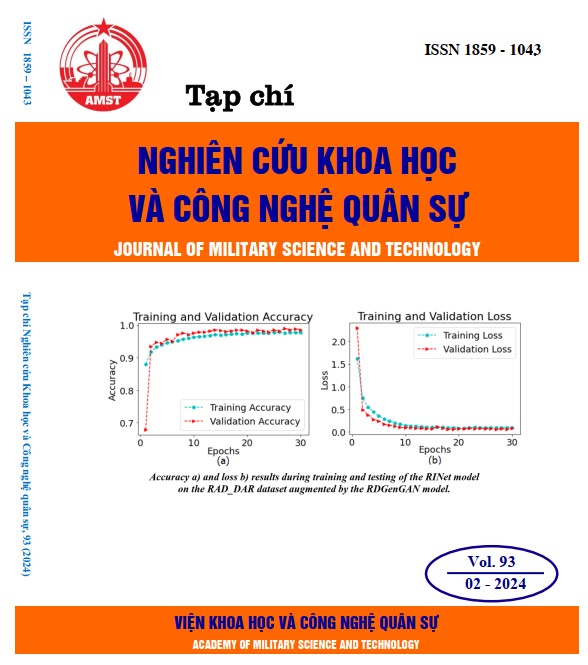Study on the casting of a 4-way plug valve body in a submarine from Cu-Zn-Si copper alloy
383 viewsDOI:
https://doi.org/10.54939/1859-1043.j.mst.93.2024.155-162Keywords:
4-port plug valve; Cu-Zn-Si copper alloy; Casting valve body; Casting simulation.Abstract
Copper alloy plug valves are used to close and switch hydraulic/pneumatic circuits in many fields, including 4-port plug valves used in the vertical balancing system of submarines. The 4-port plug valve has the advantage of a simple structure, including a body, plug, and other details. The valve body is usually manufactured by casting, then mechanically processed, and finally lapped between the plug and the body surface to seal. Due to the large number of ports, the valve body shape is complex, leading to the casting design of the valve body requiring strict requirements to avoid casting defects such as incomplete casting shape, shrinkage, gas porosity, etc. In this paper, the solution combines calculating the casting design to simulate and analyze the thermal field and casting defects, from there, choosing a reasonable casting design option and parameters, and finally, making the casting experiment for validation. The research results are the basis for implementing and perfecting valve body casting technology.
References
[1]. Hướng dẫn sử dụng 06361-902-562TO, “Hệ thống cân bằng dọc” (bản dịch).
[2]. Nguyễn Xuân Bông, Phạm Quang Lộc, “Thiết kế đúc”, NXB Khoa Học và Kỹ thuật, (1978).
[3]. ESI Group 2013 ProCAST 2013.5: User's Manual (Paris: ESI Group).
[4]. Liu J.G, Yang L, Fang X.G, Li B, Yang Y.W, Fang L.Z, Hu Z.B, “Numerical simulation and optimization of shell mould casting process for leaf spring bracket”, China Foundry 17, 35–41, (2020). DOI: https://doi.org/10.1007/s41230-020-9089-3
[5]. Machuta J, Nova I, “Analysis of heat transfer conditions in the sand and metal moulds and their effect on solidification of the casting”, Manufacturing Technology 16(2), 380-384, (2016). DOI: https://doi.org/10.21062/ujep/x.2016/a/1213-2489/MT/16/2/380
[6]. Niyama E, Uchida T, Morikawa M, Saito S, “A method of shrinkage prediction and its application to steel casting practice”, AFS Int. Cast Metals J 7, 52–63, (1982).
[7]. Zheng K, Lin Y, Chen W, Liu L, “Numerical simulation and optimization of casting process of copper alloy water-meter shell”, Advances in Mechanical Engineering 12(5), 1–12, (2020). DOI: https://doi.org/10.1177/1687814020923450
[8]. ГОСТ 17711-93 “Сплавы медно-цинковые (латуни) литейные. Марки”.







